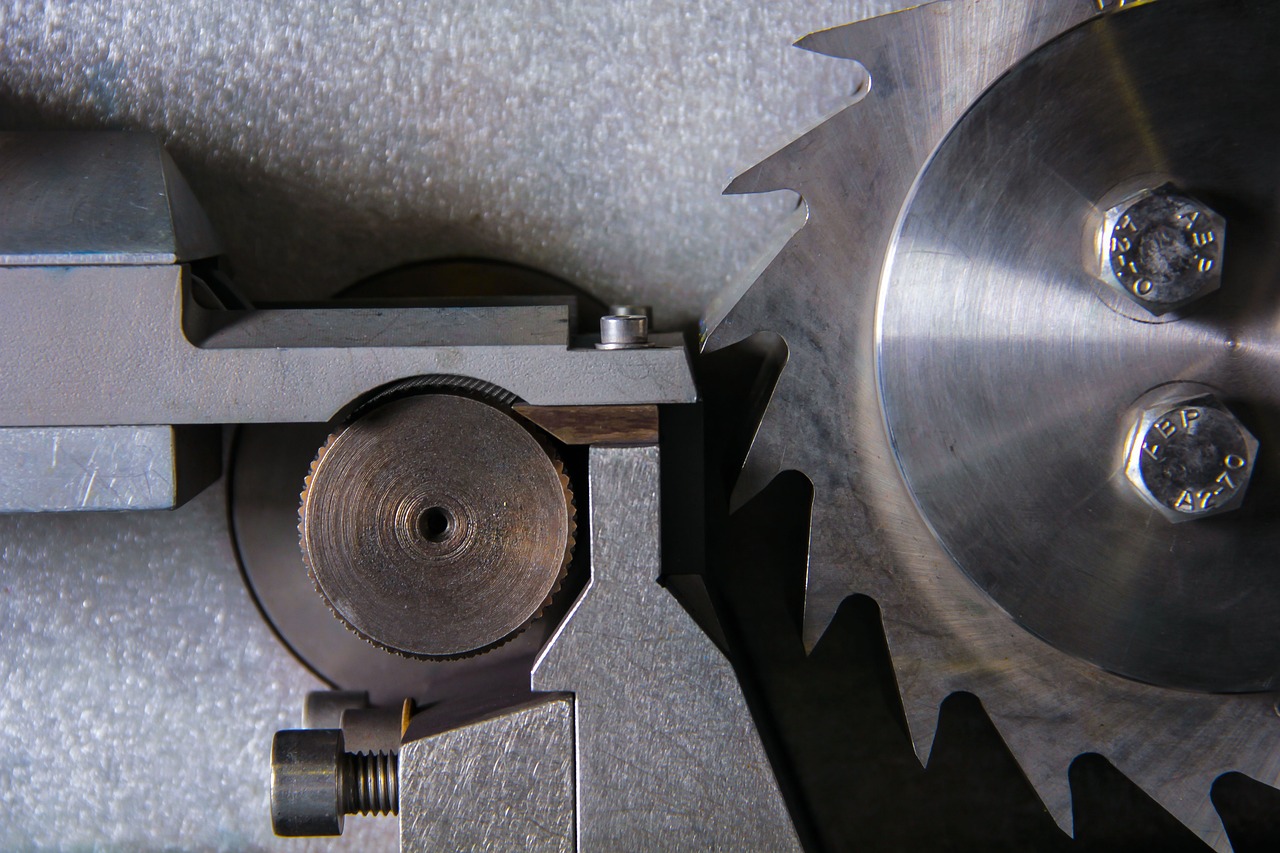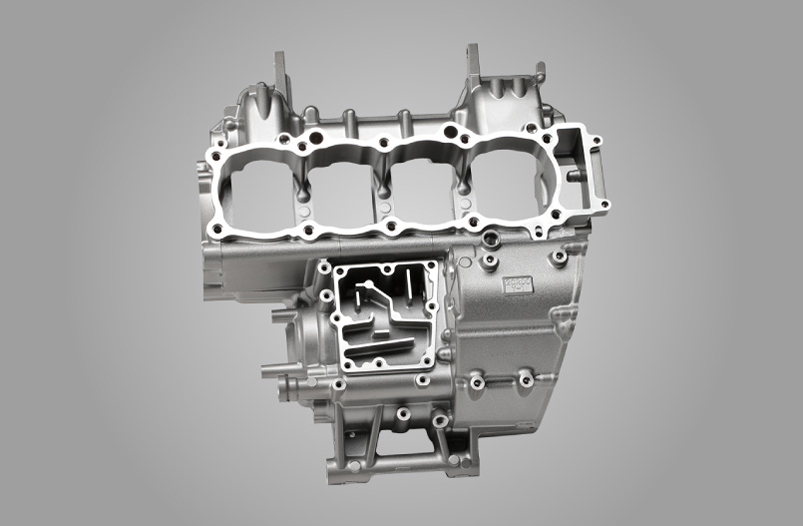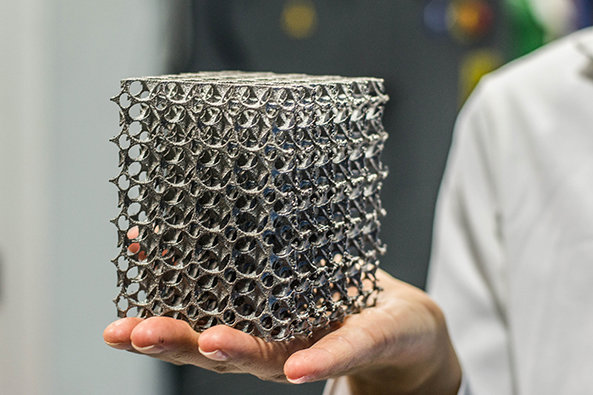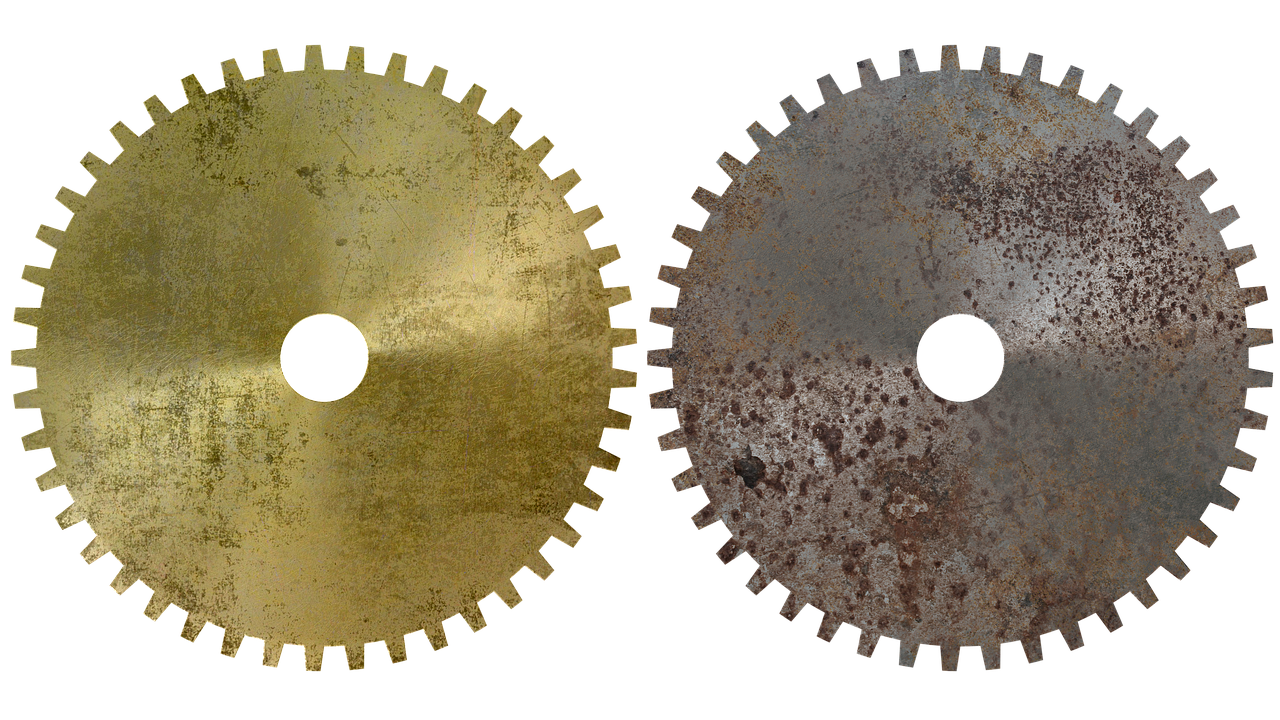Introduction
Engines are the heart and soul of every vehicle, powering our modern world and driving us toward a more sustainable future. Behind their impressive performance and efficiency lies a sophisticated world of materials and manufacturing techniques that have evolved over decades. In this article, we explore the innovations and advancements in engine materials and manufacturing methods that shape the engines of today and tomorrow.
Engines, often referred to as the heart and soul of any vehicle, are undoubtedly the driving force behind our modern world. They propel us forward, enabling everything from daily commutes to cross-country adventures, and they hold the key to a more sustainable and environmentally responsible future. However, the sheer power and efficiency that engines deliver are not just the result of serendipity. Instead, they are the culmination of decades of relentless innovation and the tireless pursuit of excellence in materials and manufacturing techniques.
The journey of engine development is an epic tale of human ingenuity, where the quest for more powerful, fuel-efficient, and environmentally friendly engines has led to significant breakthroughs. It is a testament to our ability to adapt to changing times and our unwavering commitment to meeting the evolving needs of society.
In this article, we embark on a journey through the fascinating world of engine materials and manufacturing methods, exploring the intricacies that underpin the engines of today and the engines that will propel us into an ever more promising tomorrow. From the choice of materials that form the engine’s foundation to the precision manufacturing techniques that bring these materials to life, we unravel the intricacies of the modern engine.
As we delve deeper into the realm of engine materials, we uncover the crucial role played by aluminum, cast iron, steel, and even advanced ceramics. Each of these materials brings its unique set of properties to the table, ensuring engines are not only lightweight and corrosion-resistant but also robust and heat-efficient. Their selection depends on the specific requirements of the engine, be it a high-performance powerhouse or a heavy-duty workhorse.
Simultaneously, manufacturing techniques have undergone a revolution, driven by the need for precision and efficiency. Casting, machining, forging, and even additive manufacturing are now staples in engine production, ensuring the highest levels of accuracy and consistency. The advent of technologies like 3D printing is opening new frontiers, offering rapid prototyping and customization possibilities that were once considered science fiction.
However, the engine industry’s progress isn’t solely defined by performance and efficiency. Environmental considerations have become integral to its evolution. The drive to reduce emissions, improve fuel efficiency, and minimize waste has led to the adoption of sustainable practices across the manufacturing process. The materials themselves are becoming more environmentally friendly, and energy-efficient manufacturing techniques are reducing the carbon footprint of engine production.
As we look to the future, the engine industry continues to push boundaries. Emerging materials like carbon-fiber-reinforced composites and advanced alloys promise further improvements in efficiency and performance. Hybrid powertrains and alternative fuels are redefining the engine landscape, offering a glimpse of a greener tomorrow.
In conclusion, engines are not mere mechanical marvels but a testament to human innovation and engineering excellence. They power our present and hold the key to a more sustainable future. The relentless pursuit of better materials and manufacturing techniques ensures that engines will continue to evolve, ushering us into an era of cleaner, more efficient, and environmentally responsible transportation. The journey of engine development is far from over, and it promises to be an exhilarating ride toward a brighter tomorrow.
For a comprehensive look at this subject, we invite you to read more on this dedicated page: Toyota Production System | Vision & Philosophy | Company | Toyota …
Engine materials play a pivotal role in performance, longevity, and efficiency. The choice of materials depends on factors such as engine type, application, and environmental considerations. Here are some key materials used in engines:
Engine materials are not merely building blocks; they are the bedrock upon which an engine’s performance, lifespan, and efficiency are founded. The selection of materials is a critical decision, influenced by a multitude of factors, including engine type, intended application, and the environmental challenges an engine might face. As we delve into the intricate world of engine construction, it becomes evident that the choice of materials is akin to orchestrating a symphony, each component harmonizing to create a masterpiece of engineering. Here, we unveil some of the paramount materials that form the very essence of engines, bringing power and reliability to our transportation, industries, and beyond:
If you’d like to dive deeper into this subject, there’s more to discover on this page: 5 Media as Material: Information Representations as Material …

Lightweight and corrosion-resistant, aluminum is a favored material for engine blocks and cylinder heads. Its excellent thermal conductivity helps dissipate heat efficiently, making it suitable for high-performance engines.
Aluminum, with its remarkable properties, stands as a preferred choice in the automotive world, particularly in the construction of engine blocks and cylinder heads. Its lightweight nature not only aids in reducing overall vehicle weight but also contributes to improved fuel efficiency, handling, and acceleration. This advantage is particularly valuable in sports cars and high-performance vehicles, where every ounce counts in achieving optimal speed and agility.
Moreover, aluminum’s resistance to corrosion is a game-changer when it comes to engine durability. In an environment where engines are exposed to temperature extremes, moisture, and various chemicals, aluminum’s ability to withstand corrosion ensures longevity and reliability. It prevents the formation of rust and deterioration, which can compromise engine performance and lifespan.
Perhaps one of the most crucial attributes of aluminum in the context of engine construction is its exceptional thermal conductivity. Engines generate an immense amount of heat during operation, and efficient heat dissipation is vital to prevent overheating and maintain optimal performance. Aluminum’s ability to rapidly conduct and dissipate heat ensures that the engine can operate at the ideal temperature range, contributing to its longevity and efficiency.
Furthermore, aluminum’s thermal conductivity plays a pivotal role in cold weather starts. It helps engines warm up faster, reducing cold-start emissions and improving overall fuel efficiency. This is especially important in regions with harsh winters, where quick and reliable engine performance is a necessity.
In conclusion, the enduring appeal of aluminum in engine construction lies in its lightweight, corrosion-resistant, and thermally conductive properties. These qualities not only enhance engine efficiency but also contribute to the overall performance, longevity, and environmental friendliness of vehicles across a wide spectrum, from everyday commuters to high-performance sports cars. Aluminum remains an indispensable material that continues to shape the automotive industry for the better.
To delve further into this matter, we encourage you to check out the additional resources provided here: JAGUAR LAND ROVER UPCYCLES ALUMINIUM TO CUT …

Renowned for its durability and heat retention, cast iron often finds use in engine blocks. While heavier than aluminum, it excels in applications where strength and long-term reliability are paramount.
“Cast iron, celebrated for its exceptional durability and remarkable heat retention properties, has a well-earned reputation as a preferred material for engine blocks. Although it may be heavier compared to aluminum, its inherent qualities make it an ideal choice in situations where strength and long-term reliability reign supreme.
In the demanding world of automotive engineering, where engines are subjected to immense pressures, temperatures, and stresses, cast iron thrives. Its robust nature and resistance to wear and tear make it an enduring choice for engine blocks, ensuring they can withstand the rigors of prolonged use and extreme conditions without compromising performance.
Moreover, cast iron’s impressive heat retention abilities have significant implications for engine efficiency. By maintaining stable temperatures within the combustion chamber, it promotes optimal fuel combustion, reducing heat loss and improving overall engine efficiency. This not only enhances fuel economy but also contributes to reduced emissions, aligning with modern environmental standards.
While cast iron’s weight may pose certain challenges in terms of vehicle weight and fuel consumption, its strength and reliability remain unmatched in critical applications. Whether in heavy-duty trucks, industrial machinery, or classic automobiles, cast iron engine blocks continue to be a symbol of enduring quality and engineering excellence.”
Should you desire more in-depth information, it’s available for your perusal on this page: Tesla 2020 Impact Report

Used in components like crankshafts, camshafts, and connecting rods, steel provides the necessary strength to withstand high stresses and maintain precision in critical engine parts.
Used in components like crankshafts, camshafts, and connecting rods, steel provides the necessary strength to withstand high stresses and maintain precision in critical engine parts. Its exceptional durability and resilience ensure that these vital components can endure the rigors of engine operation over extended periods.
Steel’s unique properties, including high tensile strength and resistance to deformation, make it an ideal choice for demanding applications within the engine. Crankshafts, for instance, endure substantial torsional and bending forces as they convert reciprocating motion into rotational power. Steel’s robustness enables crankshafts to reliably perform this essential function while minimizing wear and maintaining engine efficiency.
Camshafts, responsible for controlling valve timing, demand precision and consistency. Steel’s exceptional hardness and resistance to wear ensure that camshafts can maintain their profile and function accurately, guaranteeing optimal engine performance and emissions control.
Connecting rods, which link the pistons to the crankshaft, must handle dynamic loads and vibrations. Steel’s resilience ensures that connecting rods can endure these forces without distortion or failure, preserving the engine’s structural integrity.
In essence, steel is the backbone of internal combustion engines, contributing to their reliability, longevity, and overall efficiency. Its role in these critical components underscores its significance in the world of automotive and mechanical engineering, where precision and durability are paramount.
You can also read more about this here: Current Trends in Automotive Lightweighting Strategies and Materials

In some specialized applications, ceramics are employed for their exceptional heat resistance and wear properties. They can be found in high-performance engine components like spark plugs and bearings.
In some specialized applications, ceramics are employed for their exceptional heat resistance and wear properties, making them indispensable in demanding environments. These high-performance materials have found their way into critical engine components, such as spark plugs and bearings, where their unique qualities are highly advantageous.
Ceramic spark plugs, for instance, excel in withstanding extreme temperatures and maintaining electrical insulation. This durability allows for more efficient and reliable combustion within an engine, contributing to improved performance and fuel efficiency.
Similarly, ceramic bearings offer exceptional wear resistance and reduced friction, resulting in enhanced longevity and reduced maintenance requirements in various machinery, including high-performance engines. Their ability to withstand extreme heat and stress makes them a preferred choice where precision and reliability are paramount.
As technology continues to advance, the utilization of ceramics in specialized applications is likely to expand, pushing the boundaries of what’s achievable in terms of efficiency, performance, and durability across various industries. This demonstrates the enduring importance of ceramics in engineering and manufacturing.
You can also read more about this here: Pioneering the development of CMCs | Rolls-Royce

Manufacturing techniques have evolved to meet the demands of modern engines. The precision and efficiency of these methods are critical to producing engines that meet performance, emissions, and fuel economy requirements.
Manufacturing techniques have undergone a remarkable transformation to align with the ever-increasing demands of modern engines. The precision and efficiency inherent in these methods have become paramount, serving as the cornerstone for producing engines that not only meet but often exceed stringent performance, emissions, and fuel economy requirements.
In the realm of precision, advancements in computer-aided design (CAD) and computer-aided manufacturing (CAM) have revolutionized engine production. These technologies allow for the creation of highly intricate engine components with tolerances measured in microns. This level of precision is essential for optimizing engine performance, minimizing friction, and maximizing efficiency.
Efficiency in manufacturing extends beyond precision; it encompasses sustainable practices that reduce waste and energy consumption. Lean manufacturing principles, such as just-in-time production and waste reduction, have been widely adopted. Additionally, the integration of automation and robotics streamlines production lines, ensuring consistent quality while improving efficiency.
In the pursuit of cleaner and more fuel-efficient engines, manufacturers have also turned to innovative materials and processes. Lightweight materials like advanced alloys and composites are replacing heavier components, reducing overall engine weight and enhancing fuel economy without compromising strength.
Furthermore, modern engines are benefiting from cutting-edge techniques like 3D printing and additive manufacturing. These technologies enable the creation of complex geometries and custom components, offering design flexibility and further optimizing engine performance.
Environmental concerns have propelled the development of eco-friendly manufacturing practices. Engine manufacturers are increasingly adopting sustainable sourcing of materials, recycling, and reducing emissions from the manufacturing process itself.
In essence, the evolution of manufacturing techniques is intricately linked with the evolution of modern engines. The precision, efficiency, and sustainability of these methods are instrumental in meeting the multifaceted demands placed on today’s engines, whether it’s achieving higher power outputs, lowering emissions, or enhancing fuel economy. As we move forward, the continued refinement of manufacturing processes will remain a driving force behind the engines of the future, delivering both exceptional performance and a reduced environmental footprint.
For a comprehensive look at this subject, we invite you to read more on this dedicated page: Metal additive manufacturing in aerospace: A review – ScienceDirect

Casting is a common method for producing engine components like blocks and cylinder heads. It involves pouring molten metal into molds, creating complex shapes with precision. Advanced casting techniques, such as die-casting and sand casting, enhance the quality and efficiency of engine production.
Casting is a widely employed manufacturing method for producing vital engine components, including blocks and cylinder heads. At its core, casting involves the intricate process of pouring molten metal, typically aluminum or iron, into precisely designed molds. This method allows for the creation of complex shapes and intricate details with a remarkable degree of accuracy and consistency.
One of the advanced casting techniques prominently utilized in engine production is die-casting. This process involves injecting molten metal into high-quality steel molds under high pressure. The result is components that exhibit exceptional dimensional stability and surface finish. Die-casting is particularly favored in the manufacturing of engine components due to its ability to produce intricate geometries, minimize material waste, and provide excellent repeatability in the production process.
Another notable casting technique in the realm of engine manufacturing is sand casting. While it may not offer the same level of precision as die-casting, sand casting excels in producing large, heavy-duty engine components like engine blocks. It involves creating a mold from compacted sand and then pouring molten metal into it. Sand casting is well-suited for components that do not require the fine tolerances of die-casting but demand robustness and cost-efficiency.
These advanced casting techniques have played a pivotal role in enhancing both the quality and efficiency of engine production. They have enabled manufacturers to create engine components that meet strict performance standards while optimizing the manufacturing process for improved cost-effectiveness. As technology continues to advance, casting methods are likely to evolve further, contributing to the ongoing pursuit of more efficient, reliable, and environmentally friendly engines in the automotive industry.
To expand your knowledge on this subject, make sure to read on at this location: Tesla 2020 Impact Report

Precision machining is crucial for producing engine components with tight tolerances. Computer Numerical Control (CNC) machining ensures accuracy and consistency in parts like crankshafts, pistons, and camshafts.
Precision machining stands as a cornerstone in the world of engine manufacturing, playing a pivotal role in crafting engine components with the tightest tolerances imaginable. Among the many techniques employed, Computer Numerical Control (CNC) machining stands out as a true game-changer, driving levels of accuracy and consistency that were once thought unattainable.
The Art of Precision Machining:
Precision machining involves the removal of material from a workpiece to create parts with highly specific dimensions and tolerances. In the context of engines, where even a fraction of a millimeter can make a world of difference, precision machining becomes an art form.
Engine components subject to precision machining include the likes of crankshafts, pistons, and camshafts. These parts are absolutely critical to engine performance, and any deviation from precise specifications can lead to inefficiencies, excessive wear, or even catastrophic failures.
The CNC Revolution:
Within the realm of precision machining, CNC machining has emerged as a revolutionizing force. CNC machines are essentially computer-controlled machine tools that execute pre-programmed sequences of machining operations with extraordinary precision.
What sets CNC machining apart is its ability to reproduce the same complex shapes with an unmatched level of consistency. Whether it’s the intricate contours of a piston, the precisely calculated profiles of a camshaft, or the perfectly balanced geometry of a crankshaft, CNC machines perform these tasks with a level of accuracy that human hands simply cannot match.
Benefits of CNC Machining:
Consistency: CNC machining eliminates the variability associated with manual machining processes. Each component produced is an exact replica of the previous one, ensuring uniform quality across the board.
Complexity: CNC machines excel at creating intricate and complex shapes. This capability is especially crucial in engine design, where components are engineered for optimal performance and efficiency.
Tolerance Control: Engine components must adhere to incredibly tight tolerances. CNC machining allows for the utmost control over these tolerances, minimizing deviations and ensuring parts fit together seamlessly.
Efficiency: CNC machines operate with remarkable speed and efficiency, reducing lead times and production costs. This efficiency is essential in an industry where time-to-market can make or break a manufacturer.
Customization: The versatility of CNC machines means that customization is more accessible than ever. Engine designers can fine-tune components to meet specific requirements without compromising precision.
The Future of Precision Machining:
As technology continues to advance, precision machining is not resting on its laurels. Innovations like five-axis CNC machining, which allows for even greater machining complexity, are on the horizon. Furthermore, the integration of artificial intelligence and machine learning promises to optimize machining processes further and enhance predictive maintenance.
In conclusion, precision machining and CNC technology are the unsung heroes behind the impeccable performance and reliability of modern engines. Their role in crafting components to exacting standards cannot be overstated. As we look ahead, the future of precision machining promises to be a thrilling one, where the boundaries of accuracy and efficiency are pushed even further, propelling us into an era of unparalleled engine performance and innovation.
To expand your knowledge on this subject, make sure to read on at this location: Airbus | Pioneering sustainable aerospace

Forging involves shaping metal by applying force through a die. It’s commonly used for producing components like connecting rods and crankshafts, where strength and durability are essential.
Forging, a venerable and time-honored metallurgical technique, entails the art of shaping metal with the precision and brute force of craftsmanship. This process stands as a testament to the marriage of human ingenuity and raw power, as it channels immense force through a die to meticulously sculpt metal into its intended form. While its applications span a wide spectrum of industries, forging finds a particularly prominent role in the production of critical engine components, where attributes like unyielding strength and unwavering durability are non-negotiable.
One of the prime exemplars of forging’s prowess lies in the realm of automotive engineering. Within the heart of an engine, components like connecting rods and crankshafts endure the ceaseless stresses and strains of the combustion process. These are precisely the areas where forging truly shines. By subjecting metal to controlled pressure and high temperatures, the resulting forged components exhibit an impeccable grain structure, rendering them resistant to fatigue, cracking, and deformation. This innate robustness is imperative, as these components bear the responsibility of converting explosions in the cylinders into rotational power that propels vehicles.
The aviation and aerospace industries, known for their uncompromising demands on structural integrity, also turn to forging. Here, critical components such as aircraft landing gear and jet engine parts undergo the meticulous forging process to ensure they meet stringent safety and performance standards. The unforgiving conditions of flight require materials that can withstand extreme temperature fluctuations, turbulence, and high-speed forces, making forged parts indispensable.
In essence, forging remains an irreplaceable cornerstone of modern engineering, bridging the realms of artistry and metallurgy. Its ability to imbue metal with unparalleled strength, resilience, and precision makes it a trusted ally in crafting the vital components that power our vehicles, propel our aircraft, and drive countless industrial applications. From the sizzling heat of the forge emerges not just metal components, but a testament to the enduring legacy of human innovation and craftsmanship.
To expand your knowledge on this subject, make sure to read on at this location: Current Trends in Automotive Lightweighting Strategies and Materials

Emerging technologies like 3D printing are making their mark in engine manufacturing. They allow for the production of intricate components with reduced waste and lead times. Engine designers are increasingly exploring these techniques for rapid prototyping and customization.
The landscape of engine manufacturing is undergoing a transformative shift with the emergence of cutting-edge technologies, and 3D printing is at the forefront of this revolution. This innovative technique is revolutionizing the way engines are produced, offering a host of advantages that are reshaping the industry.
One of the most striking benefits of 3D printing is its ability to craft intricate engine components with astonishing precision. Unlike traditional manufacturing methods, which often require multiple steps and complex tooling, 3D printing allows engineers to design and create complex geometries in a single process. This newfound freedom in design paves the way for optimizing component shapes for maximum efficiency, enhancing engine performance, and reducing weight without compromising strength.
Reducing waste and lead times is another significant advantage of 3D printing in engine manufacturing. Traditional methods can generate substantial material waste and often involve long lead times due to the complexity of production processes. In contrast, 3D printing minimizes waste by using only the necessary materials, reducing environmental impact, and shortening production timelines. This not only streamlines the manufacturing process but also allows for quicker response to market demands and design iterations.
Engine designers are increasingly embracing 3D printing for rapid prototyping and customization. It enables them to bring concepts to life quickly, test new ideas, and refine designs with ease. This agility in prototyping accelerates innovation cycles, ultimately leading to more efficient and powerful engines. Moreover, customization is becoming more accessible, as 3D printing allows for tailored engine components to meet specific performance or application requirements, further enhancing the versatility of engine design.
As the capabilities of 3D printing continue to evolve and expand, it’s evident that this technology will play an increasingly pivotal role in the future of engine manufacturing. The potential for producing lighter, more efficient, and environmentally friendly engines while reducing waste and lead times positions 3D printing as a transformative force in the automotive industry. With each advancement in this field, we edge closer to engines that are not only powerful but also more sustainable and tailored to meet the diverse needs of modern transportation.
To delve further into this matter, we encourage you to check out the additional resources provided here: Toyota Production System | Vision & Philosophy | Company | Toyota …

In an era marked by environmental awareness, engine materials and manufacturing techniques are also evolving to reduce emissions and improve sustainability. Lightweight materials like aluminum contribute to fuel efficiency, while advancements in machining reduce energy consumption during production. Sustainable practices, such as recycling and reducing waste, are becoming integral to engine manufacturing processes.
“In our increasingly environmentally conscious era, the automotive industry is undergoing a significant transformation, and engine materials and manufacturing techniques are at the forefront of this evolution. The imperative to reduce emissions and enhance sustainability is driving innovation across the board.
One notable shift is the increasing adoption of lightweight materials like aluminum in engine construction. Aluminum’s lower weight not only contributes to improved fuel efficiency but also helps reduce the overall weight of vehicles, further enhancing their eco-friendliness. This transition to lightweight materials represents a fundamental step in the quest for greener transportation options.
Beyond the choice of materials, advancements in machining and manufacturing techniques are making engines more eco-efficient. Precision engineering and computer-controlled machining processes are reducing energy consumption during production, minimizing the environmental footprint of engine manufacturing. These innovations not only make engines more efficient on the road but also during their creation.
Moreover, sustainable practices have become integral to engine manufacturing processes. Recycling programs for materials like aluminum are being implemented to reduce the demand for raw resources, while waste reduction initiatives are minimizing the environmental impact of engine production facilities. This holistic approach ensures that sustainability isn’t just a buzzword but a core principle of engine manufacturing.
In conclusion, as environmental awareness continues to shape our world, engine materials and manufacturing techniques are evolving to align with the pressing need for reduced emissions and improved sustainability. Lightweight materials, efficient manufacturing processes, and sustainable practices collectively contribute to a greener future, where engines not only power our vehicles but also drive us toward a more sustainable and eco-conscious tomorrow.”
You can also read more about this here: Environmental Progress Report

The engine industry continues to push the boundaries of materials and manufacturing techniques. Innovations like carbon-fiber-reinforced composites, advanced alloys, and hybrid powertrains are shaping the engines of the future. Sustainable manufacturing practices, such as using recycled materials and reducing energy consumption, are becoming central to the industry’s evolution.
The engine industry continues to be at the forefront of technological advancement, continually pushing the boundaries of materials and manufacturing techniques. Innovations like carbon-fiber-reinforced composites, advanced alloys, and hybrid powertrains are not just shaping but revolutionizing the engines of the future.
Carbon-fiber-reinforced composites, for instance, are changing the game by offering incredible strength-to-weight ratios. They are finding their way into various engine components, reducing overall weight and improving fuel efficiency. These composites are also highly resistant to corrosion, extending the lifespan of engine parts.
Advanced alloys, meticulously engineered for specific applications, are enhancing both performance and durability. These alloys are tailored to withstand extreme conditions, ensuring that engines operate reliably in various environments, from the freezing cold of the Arctic to the scorching heat of deserts.
The integration of hybrid powertrains combines traditional combustion engines with electric motors, offering unparalleled efficiency and reduced emissions. This hybridization paves the way for cleaner and more sustainable transportation, aligning with global efforts to combat climate change.
Moreover, sustainability is no longer just a buzzword; it’s at the core of the engine industry’s evolution. Manufacturers are increasingly embracing sustainable practices, such as using recycled materials in production and implementing energy-efficient processes. These initiatives not only reduce environmental impact but also showcase the industry’s commitment to responsible manufacturing.
In conclusion, the engine industry is on an exciting journey towards a future marked by innovative materials, advanced technologies, and sustainable practices. As these developments continue to reshape the landscape, we can anticipate engines that are not only more powerful and efficient but also kinder to the planet, reflecting a commitment to both performance and environmental stewardship.
Additionally, you can find further information on this topic by visiting this page: Toyota Production System | Vision & Philosophy | Company | Toyota …

Conclusion
In conclusion, engine materials and manufacturing techniques are pivotal in shaping the performance, efficiency, and sustainability of engines. As technology advances and environmental concerns grow, the industry is poised to continue its relentless pursuit of excellence in engine design and production, driving us toward a more efficient and sustainable future on the road.
In conclusion, it’s clear that engine materials and manufacturing techniques play a central role in determining the performance, efficiency, and sustainability of engines. As technology continues to advance and environmental concerns become increasingly pressing, the automotive and engineering industries are poised for a dynamic and transformative future.
The relentless pursuit of excellence in engine design and production is an ongoing journey. Innovations in materials science, such as the development of lightweight and durable alloys or sustainable materials, promise to revolutionize the way engines are built. These breakthroughs will not only enhance engine efficiency but also reduce environmental impact by cutting emissions and conserving resources.
Moreover, the integration of cutting-edge manufacturing techniques, like additive manufacturing (3D printing) and precision machining, will enable the creation of highly optimized engine components. This will lead to engines that are not only more powerful but also more fuel-efficient and environmentally friendly.
As we look ahead, the convergence of these factors holds the potential to redefine the automotive landscape, propelling us toward a future where engines are more efficient, sustainable, and in harmony with the environment. It’s a journey that not only benefits the automotive industry but also contributes to a cleaner and more sustainable future on the road, ensuring that we can enjoy the convenience of modern transportation while minimizing our ecological footprint.
Should you desire more in-depth information, it’s available for your perusal on this page: The Impact of Artificial Intelligence on Learning, Teaching, and …
More links
If you’d like to dive deeper into this subject, there’s more to discover on this page: Airbus | Pioneering sustainable aerospace
